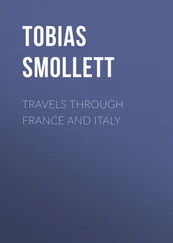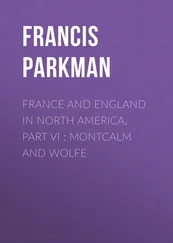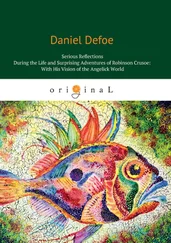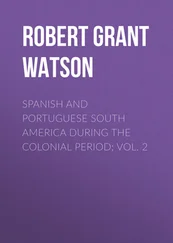Bernhard - Travels Through North America, During the Years 1825 and 1826. v. 1-2
Здесь есть возможность читать онлайн «Bernhard - Travels Through North America, During the Years 1825 and 1826. v. 1-2» — ознакомительный отрывок электронной книги совершенно бесплатно, а после прочтения отрывка купить полную версию. В некоторых случаях можно слушать аудио, скачать через торрент в формате fb2 и присутствует краткое содержание. Жанр: foreign_antique, foreign_prose, Путешествия и география, на английском языке. Описание произведения, (предисловие) а так же отзывы посетителей доступны на портале библиотеки ЛибКат.
- Название:Travels Through North America, During the Years 1825 and 1826. v. 1-2
- Автор:
- Жанр:
- Год:неизвестен
- ISBN:нет данных
- Рейтинг книги:4 / 5. Голосов: 1
-
Избранное:Добавить в избранное
- Отзывы:
-
Ваша оценка:
- 80
- 1
- 2
- 3
- 4
- 5
Travels Through North America, During the Years 1825 and 1826. v. 1-2: краткое содержание, описание и аннотация
Предлагаем к чтению аннотацию, описание, краткое содержание или предисловие (зависит от того, что написал сам автор книги «Travels Through North America, During the Years 1825 and 1826. v. 1-2»). Если вы не нашли необходимую информацию о книге — напишите в комментариях, мы постараемся отыскать её.
Travels Through North America, During the Years 1825 and 1826. v. 1-2 — читать онлайн ознакомительный отрывок
Ниже представлен текст книги, разбитый по страницам. Система сохранения места последней прочитанной страницы, позволяет с удобством читать онлайн бесплатно книгу «Travels Through North America, During the Years 1825 and 1826. v. 1-2», без необходимости каждый раз заново искать на чём Вы остановились. Поставьте закладку, и сможете в любой момент перейти на страницу, на которой закончили чтение.
Интервал:
Закладка:
Mr. Everett called for me the next day to take me to Harvard University, at Cambridge, three miles distant from Boston. At twelve o’clock we left Boston, though the heat was extreme, and rode over the wooden bridge which connects both towns, and is three thousand four hundred feet long. Cambridge is by no means compactly built, but occupies a large extent of ground. The houses are generally frame, a few of brick, and very few entirely of granite; they are however painted with bright colours and are very pleasing to the eye. Every house has a garden. Many meadows, like those in England, are enclosed with three rails, lying one above the other; Indian corn is cultivated in the fields; the grass was dry and withered.
Harvard University, one of the oldest colleges in the United States, was founded in 1638, by a clergyman named Harvard, who bequeathed it about eight hundred pounds sterling. By means of bequests made since that period, it has now a very large income. The state of Massachusetts supplies the deficiencies without however making any fixed contribution. The university has eight buildings, chiefly of brick, and only one of granite. The Unitarian chapel is in the latter, in which, besides the usual services on Sunday, morning and evening prayers are held, which all the students must attend. In front of the buildings is a large space, surrounded with trees, where the students may amuse themselves. The students are about three hundred and fifty in number, and principally board and lodge in the buildings of the university; a number, however, who cannot find room, or are recommended to families, live in private houses. They are in other respects, as in the universities of England, subjected to a very rigid discipline. The library, which occupies two halls, contains about eighteen thousand volumes. It contains the first edition of the large work on Egypt; a Polyglot bible from the collection of Lord Clarendon; a splendid edition of the Lusiad, by Camoens, with plates from the designs of Gerard, edited by the Marquis de Souza, and printed by Didot at Paris. Only two hundred and fifty copies of this edition were printed, and this copy was given to the university by the Marquis himself. Of manuscripts I saw but few, and these were Greek, which Mr. Everett bought at Constantinople during his travels, and another containing the aphorisms of Hippocrates, which an English schoolmaster copied with so much skill, that it appears to have been printed. 4 4 [This manuscript is perhaps one of the most curious specimens of calligraphy extant. Without the aid of a microscope it is almost impossible to discover that it is not a printed work, so extremely uniform and accurate is every letter. We believe it was originally prepared for the celebrated Dr. Richard Meade of London.] – Trans.
In the mathematical lecture room I did not observe a very complete apparatus. They have also but few astronomical instruments, and in one observatory there are none. A new electrical machine with a glass globe had but lately arrived from England. The mineralogical collection is under obligations to Mr. Ritchie for most of its finest specimens, which he bought during his travels at Dresden, and presented to the university. A piece of basalt found under ground in this neighbourhood, bears some similarity to the profile of a human face. It is not known whether it be a lusus naturæ or the work of human hands. Does this belong to the remains of an earlier race of men which has vanished from the earth, but which has, not without reason, been supposed by many to have once existed? The other natural collections were of slight importance; there are no collections of insects and butterflies. I saw there also the antlers of two stags, which had become so completely entangled in fighting, that they could not be separated, and in this state they were killed. The chemical laboratory is arranged in a separate house, strongly resembling a chapel. The anatomical theatre has been removed for want of room, from Cambridge to Boston. In the former lecture room, however, there are still several handsome wax preparations made in Florence, among which are two fine full length figures, male and female. The latter represents a pregnant woman, and is separable. Near the chapel is the assembly room of the academical senate, where there are some very handsome engravings. I was surprised to find among these engravings the defence of Gibraltar, by Elliot, and one which represented Admiral Dewinter taken prisoner by Admiral Duncan. I gave the attendant who conducted us two dollars, and he seemed to be so much gratified by my generosity, that when we were in the chapel he whispered to the organist, who immediately played “God save the king,” at which I was much surprised. We were escorted through the botanic garden by Professor Nuttall, an Englishman, who has made several scientific journeys in the western parts of the United States. Among the green-house plants I observed a strelitzia, which had been raised from seed in this country, and also a blooming and handsome Inua gloriosa, and a Hedychium longifolium. The green-house and the garden are both small; in the latter I remarked no extraordinary shrubs or flowers, on the contrary, however, I saw many beetles, which were new to me, with bright colours, and extremely beautiful butterflies. A son of President Adams is one of the students of the university, and also Mr. Jerome Bonaparte, a legitimate son of the former king of Westphalia, by his marriage with Miss Patterson of Baltimore, which marriage, as is well known, was dissolved by the Emperor Napoleon. This young man, who is about twenty years old, bears an excellent character.
My acquaintances increased in number, and I received visits from many distinguished men. Among those who paid me this honour on the third day after my arrival, I must mention the Danish ambassador, Mr. Pedersen, who was travelling with his family in the northern parts of the United States, and was introduced to me by Mr. Ritchie; Mr. Josiah Quincy, mayor of the city, was also present, a worthy and extremely agreeable man, to whom I am under great obligations.
After the gentlemen had withdrawn, I visited the New England Museum, a very pompous description of which had fallen into my hands. This museum is a private establishment, and consists of a mixture of wax figures, musical clocks, stuffed animals, portraits, French caricatures, butterflies, &c. Two articles alone interested me, namely, two living rattlesnakes, and three Egyptian mummies. The snakes, caught near Lake Erie, were lying in a box covered with glass, and received no nourishment but water. They are ugly creatures, of a dark gray colour, with large sharp scales and yellow bellies. Large thick heads, prominent black eyes, and forked tongues. One of them, which was engaged in casting its skin, was for the time blind; it had four rattles, and was receiving a fifth. The attendant irritated it, but we did not hear it rattle. Spirit of hartshorn is said to be very effectual against their bite. The mummies were brought last year in an American vessel from Egypt. One was in the same condition in which it had been when in the coffin, except that the cloth had been taken from the face. The two others were more or less uncovered; their coffins were well preserved. I was astonished to see the fresh colours of the figures painted on them. One of the mummies had two coffins, whence it is inferred that she was a person of high rank. I saw also a Chinese painting, representing all the tortures and modes of death common in China; a shocking and disgusting sight. Finally, I observed a good model of the old bastile of Paris, made of a stone from this building.
The mayor, Mr. Quincy, had the politeness to show us the state prison. This is situated in Charlestown, is of granite, and was built about twenty years ago at the expense of the state of Massachusetts. It consists of a centre building, containing the dwelling and offices of the superintendant, as well as the watchroom, and of two wings, where the prisoners are lodged. Behind the building is a large yard where the prisoners work. It is enclosed by a high wall, with palisades, which is guarded day and night by several sentinels. The prisoners are chiefly employed in cutting and polishing blocks of granite, which are used in Boston and its vicinity. The punishment of every prisoner who is sufficiently robust, commences with this hard labour, which, however, is changed if his conduct merits it, or if he exhibits abilities for some other employment. As stone-cutter, a daily task is assigned to him, which, if not finished, or badly done, is followed by solitary confinement. If he performs more than his task, he is paid for the surplus. Of this sum he can dispose as he pleases when discharged. Newly-arrived prisoners, and those who have conducted themselves badly, are dressed in green and blue, when, however, they conduct themselves properly again, they are freed from this distinguishing habit. Other prisoners work at various trades; supplying at the same time their mutual wants, as shoes, &c. An engraver who was imprisoned for counterfeiting Nova Scotia bank notes, worked in a separate room, and engraved very neat maps. Four prisoners sleep in one cell, which are all tolerably well ventilated, and every prisoner has his own hammock. Black bread and soup constitute the food of the prisoners, who receive besides for breakfast and supper, a portion of syrup and flour, forming a kind of pudding. Besides the usual service on Sunday, they have prayers daily.
Читать дальшеИнтервал:
Закладка:
Похожие книги на «Travels Through North America, During the Years 1825 and 1826. v. 1-2»
Представляем Вашему вниманию похожие книги на «Travels Through North America, During the Years 1825 and 1826. v. 1-2» списком для выбора. Мы отобрали схожую по названию и смыслу литературу в надежде предоставить читателям больше вариантов отыскать новые, интересные, ещё непрочитанные произведения.
Обсуждение, отзывы о книге «Travels Through North America, During the Years 1825 and 1826. v. 1-2» и просто собственные мнения читателей. Оставьте ваши комментарии, напишите, что Вы думаете о произведении, его смысле или главных героях. Укажите что конкретно понравилось, а что нет, и почему Вы так считаете.












